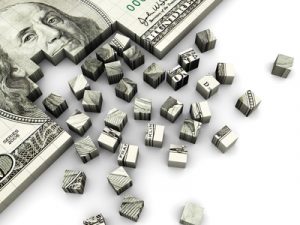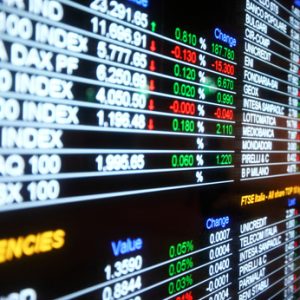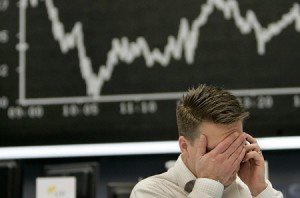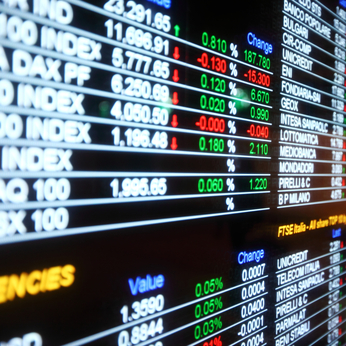I have a problem with dividend investing, and I doubt that I’m alone. My problem is that I have a…
 I love dividend paying stocks. They pay you to wait on their share prices to grow with dividends. A company’s dividend growth rate is a good proxy for how much their share price should also grow.
I love dividend paying stocks. They pay you to wait on their share prices to grow with dividends. A company’s dividend growth rate is a good proxy for how much their share price should also grow.
A company’s share price is the present value of all its future cash flows (dividends) according to classic finance theory. So, a simple way to look at it is that a company who is increasing its dividends by 3% to 5% each year should see its share price of its common stock growing at approximately the same rate.
An Example of the Dividend Growth Rate in Action
To give you an example, let’s look at one of my favorite companies, Coca-Cola (Stock Symbol: KO). In 2002, the Coca-Cola company issued a quarterly dividend of 10 cents or 40 cents per year (adjusted for the 2 for 1 stock split that took place in 2012). The share price of Coke at that time was right at about $50 (or $25 factoring the split). Over the past eleven years, Coca-Cola’s dividend has increased to 28 cents per quarter or $1.12 per year. That is a 9.8% annual increase in their dividend.
Currently, Coca-Cola’s stock price has risen to $39.23 this year. That actually equates to only a 4.2% annual rise in the price of their stock (stock split adjusted). Of course, that rise hasn’t been on a straight line but ebbs and flows with the macro economy as well. So, using this dividend growth rate and the share price, it is not out of line to say that Coca-Cola may be undervalued at these levels using this metric alone. Of course, it’s not always wise to put all of your investing eggs into the one basket of a single metric. There’s more to a stock price than that.
 A recent reader questioned the validity of a dividend aristocrat as a growth stock. His argument was whether or not you could find a growth stock among those dividend aristocrats. He asked, why invest in a dividend aristocrat because after 25 years of consistently rising dividends, how much growth could there be left in the shares?
A recent reader questioned the validity of a dividend aristocrat as a growth stock. His argument was whether or not you could find a growth stock among those dividend aristocrats. He asked, why invest in a dividend aristocrat because after 25 years of consistently rising dividends, how much growth could there be left in the shares?
The question, like most, begs for a little further examination. It made me dig into some questions? When does a growth stock become a value play? Can a dividend aristocrat be a growth stock? Or, is it a value stock by its very nature? And, what role does the dividend payout ratio play in our determinations?
Understanding Growth Stocks vs Value Stocks
Investopedia defines a growth stock as a stock whose share price grows at a faster rate than the overall stock market. Last year, of course, the S&P 500 Index saw a 13% gain, and it is set to make a comparable run here in 20113 as well.
Conversely, a value stock is the ying to growth stocks’ yang. Value stocks are often undervalued when compared to the company’s financial metrics. Investors often find that value stocks have a higher dividend yield, lower price to book ratio, and often a lower price to earnings (PE) ratio than growth stocks traditionally.
Can A Dividend Aristocrat Be A Growth Stock Too?
Yes, a dividend aristocrat can be a growth stock also, but it may be unlikely. They are more likely to be a value stock and a blue chip company. Out of the 59 dividend aristocrats in the S&P 500 index, many have seen year over year share price growth of over 13% in recent years. While we may not consider strong dividend payers as high growth companies, the possibility is still out there for those companies to provide both income and capital appreciation to shareholders.
 Stock share buybacks or share repurchase plans have become all the rage on Wall Street lately with the stock market’s excellent run so far this year. In fact, in the first quarter of 2013, companies in the United States have bought back over $105 billion worth of their stock. This has edged out the payment of dividends which only accounted for a little over $70 billion in January through March of this year.
Stock share buybacks or share repurchase plans have become all the rage on Wall Street lately with the stock market’s excellent run so far this year. In fact, in the first quarter of 2013, companies in the United States have bought back over $105 billion worth of their stock. This has edged out the payment of dividends which only accounted for a little over $70 billion in January through March of this year.
Recently, Wal-Mart announced that it will repurchase $15 billion of its shares in a repurchasing plan. This was just the latest announcement in a string recently. Others announcing repurchase plans or increasing existing plans have been the likes of Sirius XM, CVS, Monsanto, Priceline, Las Vegas Sands, and many others.
But, are share buybacks a good deal for investors? There are a few benefits of the programs to be sure such as raising the earnings per share by withdrawing outstanding shares from the market and returning earnings to shareholders. But, there are also some underlying principles of the share buybacks program that can leave investors with a bad taste in their mouths if they are not careful.
Here are a few things to consider about share buybacks…
Lack Of Ideas For The Money
One of the biggest drawbacks of a share repurchase plan or stock share buybacks is that the company does not have an idea to put their money to good use. Share buybacks are the easy option for the company when they cannot find another creative idea to put the cash to work. Why not spend that money expanding their business? Why not make an acquisition or open new stores? Why not use that money to grow through research and development? Why not use this capital to replace aging property, plant, and equipment? These are what shareholders should be screaming for the companies they own to be doing with excess cash on the balance sheet.
Companies Do Not Have To Honor Share Buybacks
Companies can announce share buybacks all they want. Like the saying goes, it’s the action that truly matters. And, far too many companies announce a large share buyback program only to not finish it. There is nothing binding to a company after they announce a share repurchase plan. It is all voluntary. Sometimes companies wise up and realize that their share buybacks are not in the best interest of shareholders. Other times they run into financial difficulties and decide not to go through with the repurchase plan. Either way it is not set in stone. The announcement of a repurchase plan should not be the driving force for investors to purchase shares in a company. At least with a failed share buyback plan the company can sneak off in the middle of the night and just not finish the repurchasing. Typically there isn’t much fanfare or gnashing of teeth when that occurs. But, that would not be the case if the money was used for a dividend instead and ultimately had to be curtailed.



